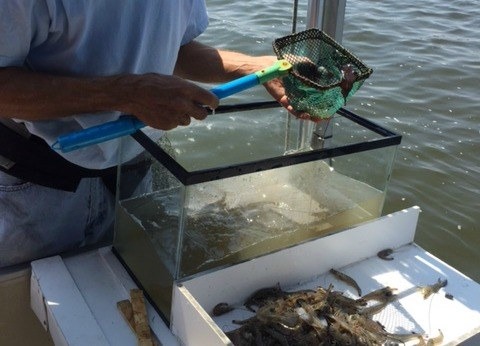A Gulf Shores Cruise For Gourmands
Oysters are the shapeshifters of the sea. Ingenious and ever-adaptable, they're born male, but can switch to female and back to male again.
This is just one of many "gee-whiz" facts I learned on a Sailaway Charter through the bayous of Alabama. Skip Beebee, captain of the Miss Janet, offered our crew an up-close-and-personal tour of the oysters, shrimp, and blue crabs that Gulf Shores restaurants offer on their menus.
It's one thing to slide a plump, buttery mouthful of jiggling oyster down your throat, but to see where it grew up, to learn how it attaches itself to rocks, to piers, to anything that's not moving, and to actually participate in raking it onto a culling table adds a whole new dimension to the dining experience.
Beebee has been offering his nature tours of Longs Bayou and Wolf Bay since 1996. Guests have a choice of two vessels: the Windy Ways, a 48-foot ketch he lived on for six years while sailing from San Diego through the Panama Canal, or the cruiser he named after his wife, Janet, whom he met at a bus stop in Guatemala.
After sailing throughout Honduras, Belize, Mexico, Costa Rica, and Nicaragua, the happy couple docked in Orange Beach, Alabama, and have been giving nature tours ever since. Besides dispensing little-known facts about transgender oysters and advice on the best restaurants at which to enjoy the Gulf of Mexico's famous royal red shrimp, Captain Skip teaches his passengers to tong for oysters, seine for shrimp, and pull up baskets of blue crab. Bottlenose dolphins, especially an old-timer Beebee calls "Mr. Friendly," often come along for the ride too.
"We ought to call him Mr. Hungry," the captain said about the eight-foot dolphin he recognizes by the white scrape on his dorsal fin. (Although, in retrospect, shouldn't we also be calling Captain Beebee "Skipper Skip"? It has a nice ring to it.)
Whatever you do, Beebee instructs us, don't interfere with Mr. Friendly's food. Once, he got so mad at the gulls that were snatching up Beebee's rejects that he jumped up and grabbed one by its leg.
Another word to the wise about these tours: Do not wear white. In Alabama, oysters are harvested with a process called tonging, and let's just say it's a bit messy. Lots of mud and gunk comes up with the oysters that Beebee harvests using nine-foot poles with rake-like tongs that open and close like scissors and are scraped along the bayou floor.
A bright orange buoy with an "S" (for Sailaway Charters) on the side is our next destination. Although more than 60 varieties of crab inhabit Alabama waters, we're on the hunt for the famous blue crabs, whose meat is soft, sweet, and juicy all the way out to the claws. Beebee pulls up a metal cage with a half dozen blue crabs complete with gigantic front pinchers that lash out in angry consternation.
Avoiding their wrath, he manages to flip one over, revealing a T, which indicates that this particular specimen is male; the females in the cage have round underbellies. After properly examining the blue crabs whose brethren will be featured on tonight's dinner plates, Beebee bravely tosses them — pinchers wildly grasping — back into the bay.
Next, with seagulls flocking overhead, he throws out shrimp nets (weighted doors keep them open) from the back of the boat. A few minutes of trawling later, he hauls in the net and empties it into a seawater tank. Jellyfish, puffers (they feel like the Pillsbury Doughboy), squid, eels, and ribbonfish drop from the nets along with several varieties of shrimp.
Beebee may call the two hours on the lazy bayous a nature tour, but for a gourmand, they're the perfect introduction to area menus.
So sure, by all means, enjoy the seafood while visiting Gulf Shores. Just never forget whence it came.
